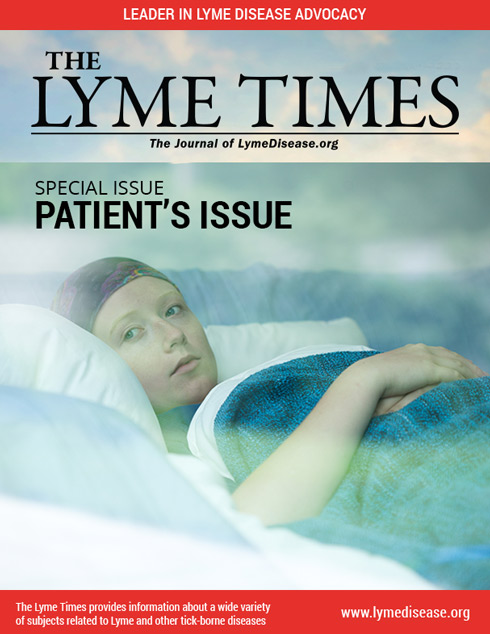- Home
- Find A Physician
- FIND A PHYSICIAN
- LymeTimes
- Current Issue
- Archives
- FEATURED LYMEDISEASE.ORG ISSUES
- Resources
- LYME LITERATE PHYSICIAN VIDEOS
- Physicians
- Members
- About Us
- Resources


Special Issues


Special Issues




How 11 top NYC doctors missed my Lyme disease
This is one of a series of guest blogs by people who have enrolled in MyLymeData.
By Dana Parish
Principles of Laboratory Testing for Lyme Disease
Most cases of late Lyme are not diagnosed right off the bat.
By Elizabeth Maloney, MD
Drug-Supplement Interactions in Lyme Disease
Interactions are common and often not well known.
By Leo Galland, MD
Problems with Yeast
Lyme patients are prone to problems with yeast.
By Daniel A. Kinderlehrer, MD
Two Standards of Care Lyme Disease
ILADS and IDSA guidelines reflect deeply divided opinions.
By Lorraine Johnson, JD, MBA
Probiotics and Lyme Disease
To help combat the complications of antibiotics in the treatment of Lyme disease, many people turn to probiotics.
By Polly Hattemer
Debilitating Experience of Fatigue
Patients know the difference between “normal tired” and “too tired to breathe”
By Jennifer Crystal, MFA
Children and Lyme Disease Infographic
CLDN developed an infographic to help you understand the impact Lyme disease has on children’s lives.
By CLDN
Children and Lyme Disease Symptoms
Lyme disease can be particularly difficult to identify in children and adolescents.
By Darlene Wood
Lyme Disease-Early vs. Chronic
If Lyme disease is not diagnosed and treated early, it may become late-stage or chronic.
By LymeTimes Editor
Do You Have Lyme Disease?
Lyme disease symptoms checklist helps people document exposure to Lyme disease.
By LymeTimes Editor
ILADS Treatment Guidelines
ILADS guidelines recognizes the importance of shared medical decision-making between a patient and their physician.
By LymeTimes Editor
Advanced Topics in Lyme Disease
Diagnostic Hints and Treatment Guidelines for Lyme and Other Tick-Borne Illnesses
By Joseph J. Burrascano.Jr., MD
EXPLORE LYMETIMES
Most Popular Articles
NEWSLETTER SIGN UP
Subscribe to our mailing list and get Lyme disease news updates to your email inbox.
We respect your privacy and take protecting it seriously.

























